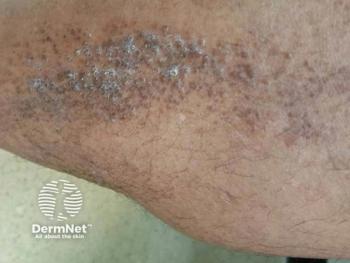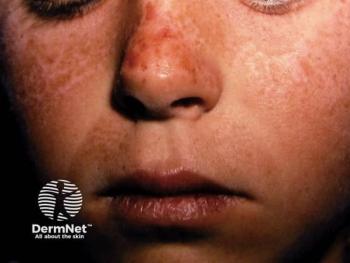
Study Suggests Significant Unmet Need in Current GPP Treatment
Patients with generalized pustular psoriasis flares were 2 times more likely to have emergency department visits.
A study published in the Journal of the American Medical Association Dermatology found there is a significant unmet need in the current treatment methods of generalized pustular psoriasis (GPP) and its flares. The study aimed to determine the differences in treatment options between patients with GPP flares and those without documented in US electronic health records (EHR).
The cohort study enrolled 1525 adult patients with GPP, with 271 patients reporting 513 documented flares. Patients with GPP flares had a higher comorbidity burden, were 3 times more likely to have inpatient hospital visits, were 2 times more likely to have emergency department visits, and had a higher use of almost all treatment classes. Researchers found that despite the high level of severity, advanced treatment options for GPP were rarely used during flare-ups.
According to the study, flare-ups were characterized by the frequency of occurrence per patient, the care setting in which they were identified, the type of health care professional managing the flare-up, associated symptoms, and the type of treatment before, during, and after the flare-up. Patients were divided into groups based on whether or not they had a flare-up documented in their EHR. Comparisons were made between the groups based on demographic characteristics, comorbidity burden, health care use, and treatments.
Patients with EHR-documented GPP flares were more likely to be enrolled in Medicare and Medicaid and less likely to be enrolled in commercial insurance. Patients with EHR-documented GPP flares also had a higher comorbidity burden than those without documented flares, with a 34% higher mean Charlson Comorbidity Index score (2.80 vs 2.09). More patients with EHR-documented GPP flares had common comorbidities such as autoimmune conditions, compared to patients without documented GPP flares.
Out of 513 documented GPP flares from 271 patients, 53% of flares were recorded in outpatient settings, 36% were recorded in inpatient settings, 9% were recorded in emergency department settings, and 2% were recorded in other settings.
For the 271 flare-ups recorded in outpatient settings, 73% were documented by dermatologists, 10% were documented by rheumatologists, and 9% were documented by primary care professionals. The majority of flare-ups were documented within the same month as the index GPP diagnosis, with 87% of those flare-ups documented within the same month, representing 58% of all flare-ups. Regarding signs and symptoms during flare-ups, 61% of patients reported pain, 46% reported rash, and 45% reported fever.
During a flare-up, 35% of patients were treated with topical corticosteroids, 13% were treated with oral dermatologic treatments such as methotrexate, cyclosporine, and tacrolimus, and 11% were treated with oral corticosteroids. Opioids were prescribed during 21% of flare-ups. Almost 1/4 of all flare-ups had no dermatologic treatment initiated 30 days before, during, or 30 days after. The use of biologics and other advanced treatments such as phosphodiesterase 4 and Janus-kinase inhibitors was low.
Researchers concluded that, “Despite this high level of severity, advanced treatments are very rarely used during flare episodes, leaving a significant unmet treatment need for patients with GPP and for health care professionals.”
Reference:
- Zema CL, Valdecantos WC, Weiss J, Krebs B, Menter AM. Understanding flares in patients with generalized pustular psoriasis documented in US electronic health records. JAMA Dermatol. Published online August 10, 2022. doi:10.1001/jamadermatol.2022.3142
Newsletter
Like what you’re reading? Subscribe to Dermatology Times for weekly updates on therapies, innovations, and real-world practice tips.


















